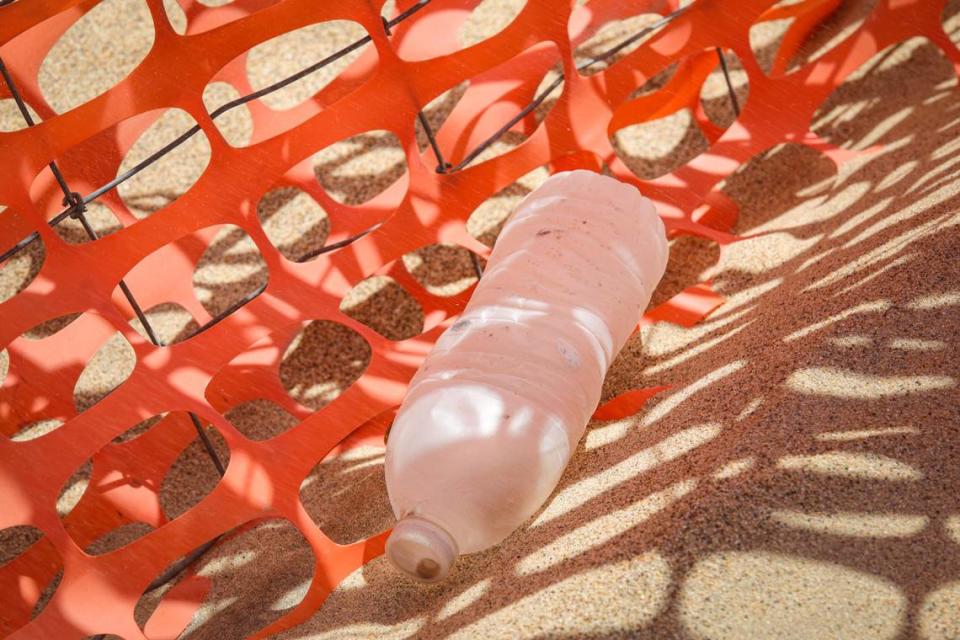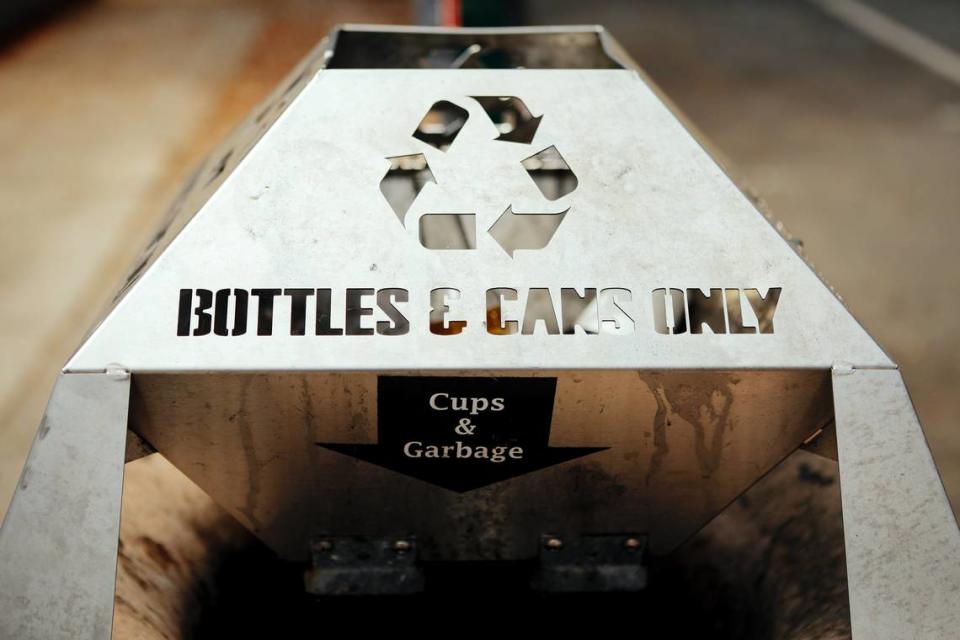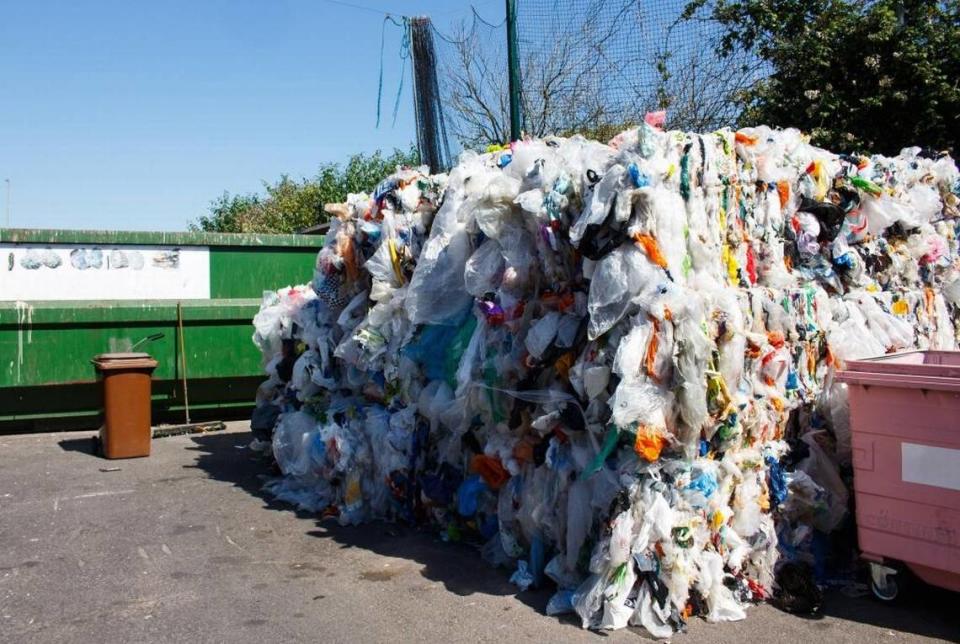Is recycling a solution for climate change in SLO County? Yes and no, but here’s how to help
Editor’s note: This is the second in a series of columns by Joana Tavares, The Tribune’s American Association for the Advancement of Science mass media fellow, answering reader questions about climate change. Tavares is completing a doctorate degree in earth sciences at UC Irvine.
Nancy from San Luis Obispo wrote,
“I’m interested in hearing the ways recycling and climate change interact. Also, paper, and plastic products, which are used quite heavily in SLO and elsewhere, seem to play a part, too? I would love your thoughts and possible community steps for addressing these or other pressing local negative impacts on climate change.”
Dear Nancy,
Let me tell you a story that happened a couple years ago. It all started when a recently divorced marine scientist (wink, wink) decided to try her luck in one of these popular dating apps.
In her profile, she made it very clear that environmentalism was important to her.
Upon browsing through matches, the scientist settled for a charming wave photographer, who, via text, reiterated his commitment to the sustainability cause.
They decided to meet at a beach. The scientist arrived and found her date already there, as handsome as in his photos, but — brace yourself for the heart-breaking part of the story — drinking from a single use plastic bottle! Shocked, she confronted her suitor, who replied: “Don’t worry, baby. I recycle.”
That was how I realized that recycling is not as a much a solution for pollution as it is one of its causes, for it creates a mental loophole that may trick even well-intentioned (and rather attractive) people into taking part of a complex operation that is destroying what we earnestly love.

Use of plastics has skyrocketed
The reality is that, inadvertently or not, we are consuming natural resources 1.75 times faster than what our planet’s ecosystems can regenerate.
While recycling may be a good way to convert certain items into reusable materials (or into organic matter, as in the case of composting), much of what we place in our recycling bins cannot be recycled in a cost-effective way and ends up in landfills or in the ocean.
Plastic is, as you point out, one of the most abundant man-made materials — and one of the most difficult for us to deal with. Currently, 85% of all the plastic consumed in the U.S. ends up in landfills with 10% being incinerated.
The problem has gotten worse over time, as we incorporated the use of disposables into our everyday lives, and the plastic industry ramped up production with minimal governmental control until recently.
In 1960, recycling was practically nonexistent, but the average American produced only 4 pounds of plastic waste per year. In 2018, 5-8% of all plastic waste was being recycled, but by then each American was generating a whopping 220 pounds of plastic waste per year.
Most people are aware that plastic pollution is a serious environmental and human health issue. What most people seem to be oblivious about is the connection between recycling and climate change.
Relationship status? It’s complicated
In principle, recycling reduces emissions because it reduces the need for carbon-intensive harvesting of virgin natural resources.
For example, we know that recycling aluminum saves 95% of the energy associated with acquiring its raw equivalent. But in practice, when considering all the different materials and the challenges establishing efficient recycling programs, the usefulness of recycling as a climate change solution is questionable, particularly when it comes to plastic.
Plastic and climate change are connected in several ways.
Most plastics are made from fossil-fuels, such as petroleum, in a very energy-intensive process. One study estimated that, in 2015, the carbon footprint of plastic production accounted for 4.5% of global greenhouse gas emissions.

Then, what ends up in landfills and ocean will slowly break down into smaller pieces, while releasing methane and ethylene, which are both potent greenhouse gases. Scientists are now studying the long-term impacts those microplastics will have on our oceans.
Other types of waste contribute to the climate problem as well.
Food waste, for instance, is estimated to be responsible for 8-10% of global greenhouse emissions. This may not seem like a lot, but it means that if it were a country, food waste would be the world’s third largest emitter, after China and the U.S.
That’s why California recently passed a law requiring that food scraps be discarded in greenwaste bins instead of the trash.

We need to talk
If recycling is not a good enough solution, what is?
Clearly, reducing consumption will be necessary. We will need systemic changes to replace our outdated linear production models with a circular economy that redesigns products and production so that they becomes less resource intensive and we can transform “trash” into new materials.
And finally, as a society, we should be investing more in research and development to produce biodegradable fibers that can replace plastic in the disposable items we cannot live without.
Meanwhile, here are some ways you can improve your relationship with the planet immediately:
Whenever possible repair what you already own or buy refurbished and used items.
Refuse disposable products. If you must use disposables, choose products packaged in glass, paper, aluminum or other metals.
Give preference to restaurants that minimize the use of single-use plastic. Check out Yelp’s new filters that allow you to identify eco-friendly business.
Shop in stores that allow you to bring your own reusable and refillable containers. While a zero waste shop doesn’t yet exist in SLO, you can find bulk food aisles in SLO Food Co-op, El Rancho Market Place, and Sprouts.
Ready to move to the next level? Bring your own containers to restaurants so that you can take leftovers home.
Compost your food scrapings and other organic waste to avoid extra methane emissions from food rotting in landfills.
Get more involved in your city’s government and support policies that properly address the waste problem. San Luis Obispo, for example, has incorporated circular economy goals in its Climate Action Plan to reduce waste. According to Tina Clark from the Utilities Department, in the past five years, the city has diverted 40-48% of its waste from landfills, an amount comparable to the state rate (37-42%) and significantly higher than the national average (32%).
And last but not least, the single most important thing you can do: Talk about it! Educate yourself and spread the word.
To learn more, visit websites like RethinkDisposables.org, BeyondPlastics.org, Algalita.org. Or get involved with like-minded people in local groups like EcoSLO, Surfrider Foundation SLO and the Resilience SLO Challenge.
Do you have a climate change question for Joana Tavares? Email her at jtavares@thetribunenews.com.

